Yes, you can use a Kerosene heater indoors, but not for long hours. Use it only for a short span of time. You can use it in an emergency, and it must not be used as a permanent heating solution.
Contents
Winters are so chilly in the US. Living without a heater is tough; you can’t get a good night’s sleep. As soon as Winter starts, the need for effective and budget-friendly indoor heating solutions becomes increasingly apparent. Among the many options available, kerosene heaters stand out for their affordability and portability. However, using a kerosene heater indoors for a longer duration is not recommended. In fact, you should only use a Kerosene heater in an emergency. I mean when your main heating system doesn’t work, you can use a Kerosene heater for the time being. Never use it as a permanent heating solution for your bedroom, and for that, I have some solid reasons which I will discuss further. Also, let’s get to know what exactly is a Kerosene Heater.
What Is A Kerosene Heater?
A kerosene heater is a portable heating device that uses kerosene fuel to generate heat and warm indoor spaces. It consists of a tank to hold the kerosene, a burner unit, and various other parts. Kerosene heaters are commonly designed for short-term usage. It may not be used as the main heating system of your house. You can use it when your main heating system is not working or in times of power outages.
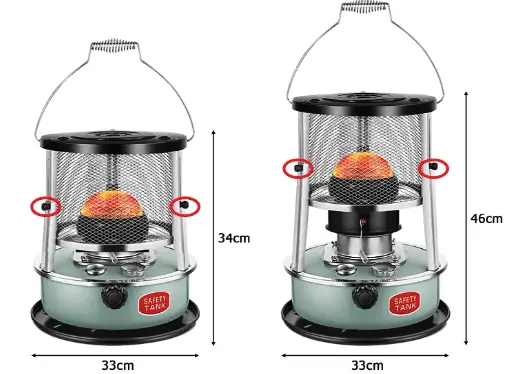
How Kerosene Heater Work?
There are many parts of the kerosene heater that collectively work together to generate heat. Let’s find out…
- Fuel Tank: As the name says, the heater generates heat by burning the kerosene. Thus, kerosene must be stored in a tank. So, the Fuel tank is where kerosene is stored. The tank’s size varies among different models.
- Burner Unit: The burner unit is responsible for igniting the kerosene and producing heat. It typically includes a wick or a combustion chamber where the kerosene is vaporized and burned.
- Wick: Many kerosene heaters use a wick to draw kerosene from the tank and deliver it to the burner. The wick’s height can often be adjusted to control the heat output.
- Ignition Mechanism: Some kerosene heaters have a manual ignition process, requiring a match box or lighter to start the flame, while some other models may have automatic ignition systems for convenience and safety. I would advise going with the models that have automatic ignition systems.
- Safety Features: Although Kerosene heaters are dangerous in general, manufacturers try their best to equip the device with various safety mechanisms to minimize risks. These can include tip-over switches that shut off the heater if it falls over, automatic shut-off features if the heater overheats, and, in some cases, oxygen depletion sensors to detect reduced oxygen levels in the room.
- Chimney or Heat Diffuser: Some kerosene heaters have a chimney or heat diffuser that helps distribute heat more evenly and prevents direct contact with hot surfaces.
- Fuel Gauge: Many models come with a fuel gauge or indicator to show the remaining kerosene level in the tank.
Kerosene heaters are known for their portability, affordability, and efficiency in providing quick and localized heat. They are commonly used in workshops, garages, temporary construction sites, and even as backup heating sources in homes. However, it’s essential to follow safety guidelines when using kerosene heaters indoors, as they produce carbon monoxide which is harmful to us.
Types of Kerosene Heater
There are 2 primary types of kerosene heaters: Convection and Radiant. Convection heaters are designed for heating multiple rooms or even entire houses and should not be used in small, poorly ventilated spaces. Radiant heaters, which warm only a single room at a time, offer a more localized heating solution.
Why the Kerosene Heater Must Not Be Used for Long Hours?
Although Kerosene heaters do the heating well, they cannot be used for longer duration as it will impact your health badly.
Below are some reasons:
- Limited Ventilation: Kerosene Heater gives heat when kerosene burns. When something burns, it uses oxygen. And, when you use it for an extended period, it can consume oxygen inside your bedroom, also it emits carbon monoxide which is a highly toxic gas. Thus, never use it for long hours.
- Fire Hazard: The longer a kerosene heater operates, the higher the risk of accidents like tipping over or malfunctioning, potentially leading to fires that can cause huge damage to your house.
- Carbon Monoxide Poisoning: As said already, when kerosene burns to give you heat, it consumes Oxygen inside the room, and Carbon Monoxide emits which is poisonous if you intake it for a prolonged period. It can be life-threatening. It can show symptoms like headaches, dizziness, nausea, and, in severe cases, unconsciousness or death.
- Increased Fuel Consumption: Although Kerosene heaters are very cost-effective while buying it, for long hours of use, they can use more Kerosene, which overall increases the cost of heating. This may negate some of the cost-effectiveness of kerosene heaters.
- Potential Legal Restrictions: Local regulations may limit or prohibit the extended use of kerosene heaters indoors due to safety concerns. Violating these regulations can result in legal consequences.
- Risk of Overheating: Continuous operation can lead to the overheating of the heater, potentially causing damage to the device and increasing the risk of fires.
- Not Designed for Long-Term Use: Kerosene heaters are designed for short-term or emergency heating solutions. Using them for extended periods can lead to wear and tear, reducing their efficiency and safety over time.
- Health Concerns: As it emits CO gas, it can irritate the respiratory system, leading to coughing, throat irritation, and other health issues.
The Benefits and Considerations of Kerosene Heaters
Kerosene heaters offer several advantages that make them an attractive choice for indoor heating for short-term use
- Portability: Kerosene heaters are compact and easy to move allowing for heating flexibility within your home.
- Cost-Effectiveness: They provide an economical heating solution, potentially reducing energy bills if used for small duration.
- Independence: Kerosene heaters don’t rely on electricity, making them a reliable heat source during power outages.
- Efficiency: These heaters can rapidly generate heat, quickly warming up a room.
However, despite these benefits, the safe use of kerosene heaters indoors requires strict adherence to safety precautions.
Tips For The Safe Use Of A Kerosene Heater Indoors
Since we had a Kerosene heater in our house, I can share some tips for using the Kerosene heater safely. Moreover, I would honestly recommend not using this heater, but if you have to do so, then please adhere to these safety guidelines, I am sharing with you
1. Proper Ventilation
Since Kerosene heaters consume oxygen to burn and generate heat. Thus, CO gas is emitted, and oxygen level drops in the room. In this situation, a longer use will be life-threatening. Thus, it is important to have. proper ventilation. The room must not be fully closed, it must have some place from where fresh air comes inside to balance the oxygen levels inside the room and give way to CO gas to go out.
Installing a carbon monoxide detector in your room or house where you use the heater would help you keep a check on the CO levels. So that, when CO levels go high, you know it, and you can shut the heater quickly.
2. Temporary Use Only
The very first thing I would like to tell you is that kerosene heaters are not designed for longer-duration use. So, you never make it a permanent heating source. These portable heaters are designed for short-term or emergency use while your permanent heating system starts working again.
Also, many local municipalities may have specific guidelines regarding the use of kerosene heaters. It’s advisable to contact your local authorities for clarification on the legality of indoor kerosene heater use. Otherwise, you will end up committing a crime
3. Continuous Supervision
If you are using a Kerosene heater, make sure you don’t leave it unattended while it’s in operation. Proper vigilance is important otherwise fire or burns may happen with this heater. The heater might tip over or malfunction, potentially leading to a fire or other hazardous situations.
In case of a fire caused by the kerosene heater, remember that you must not attempt to extinguish it with water or blankets. Instead, try to manually turn off the heater if possible and use a fire extinguisher. You can always call 911 if the situation is worse.
4. Maintain Clearance
Maintain a safe distance of at least three feet between the kerosene heater and flammable objects such as curtains, furniture, or any combustible materials. Place the heater on a level surface and ensure that children and pets are kept away, especially during operation.
Using the kerosene heater for purposes other than heating your living space, such as drying clothes or heating food, is strongly discouraged. These activities pose serious fire hazards.
5. Choose the Right Heater
I would rather say, don’t buy it if you already have a Kerosene heater, but still if you are buying it, look for specific safety features, such as:
- Automatic Shut-off Function: This feature enhances safety by automatically turning off the heater in case of malfunctions or overheating.
- Battery-Operated Ignition: Battery-operated ignition eliminates the need for matches or open flames, reducing the risk of accidents.
- UL Certification: Ensure that the heater is certified by Underwriters Laboratories (UL), signifying that it meets essential safety standards.
6. Use the Right Fuel
When fueling your kerosene heater, be selective about the type of kerosene you use. Only use certified K-1 kerosene, which is typically available at gas stations, auto shops, and hardware stores. Be sure to purchase the highest grade of kerosene available.
You must have to properly inspect the kerosene before use. It should be clear, and free from any contaminants, particles, or bubbles. If the kerosene appears abnormal or has a persistent, unusual smell after the initial heating period, discontinue use and replace the fuel.
7. Storage Considerations
Store kerosene in a cool, dark place away from other fuels like gasoline. Never store a heater with kerosene still inside it.
When Not to Use a Kerosene Heater Indoors?
Although I am writing about this Kerosene Heater’s safety guidelines, I would still recommend that if you don’t have it, don’t buy it for yourself. It is dangerous in many ways. There are many types of heaters that are good for health and also not this much dangerous.
Even if you are using it in your house, there are situations when it’s best to avoid using a kerosene heater indoors altogether:
- Small, poorly ventilated spaces: Kerosene heaters should not be used in small rooms with inadequate ventilation, as carbon monoxide buildup can occur quickly.
- Sleeping Areas: It’s not advisable to use a kerosene heater in bedrooms, as you may not be as alert to potential issues while sleeping. This is very important, Never leave a kerosene heater running while you are asleep. It can be dangerous in many ways as I have already explained in this article.
Conclusion
So, the conclusion is, yes, you can use a kerosene heater indoors, but you have to take care of things that I have mentioned in the article in order to stay safe and prevent any dangers. If used correctly, kerosene heaters can provide an effective and affordable way to stay warm during the colder months while minimizing the risks associated with indoor use. Always make sure that you use Kerosene Heaters for only small duration of time.

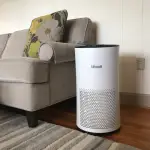
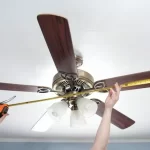
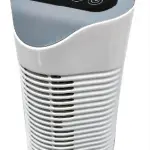



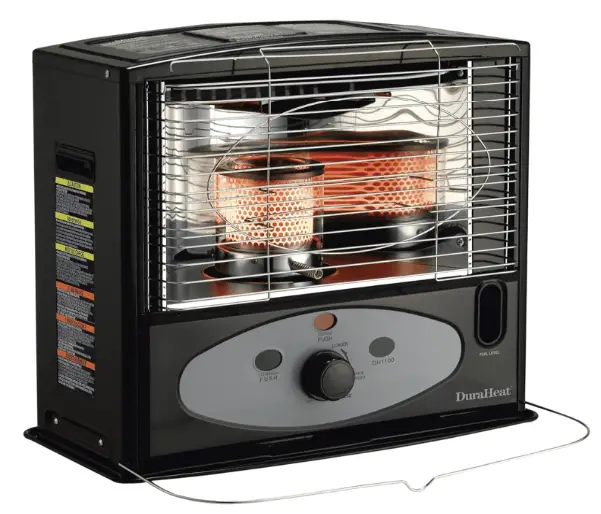
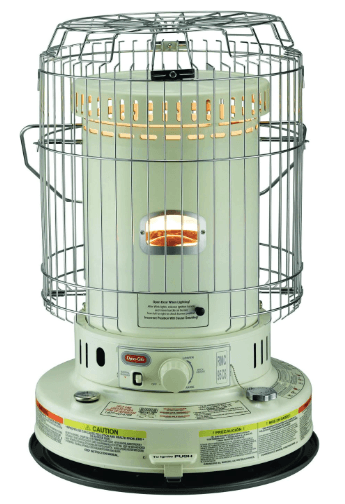
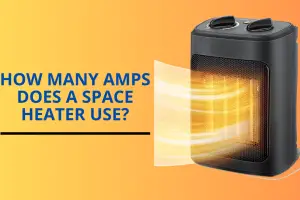

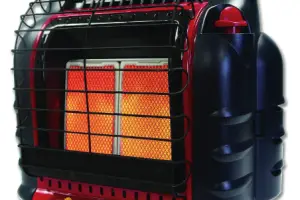
Add Comment